laloreleï
2-hour performance presented three times during the exhibition Prix-exposition Art Norac-FRAC Bretagne, Rennes (France)
Curator: Elena Cardin
Performer: Ramo Jalilyan
Photo: © Aurélien Mole et © Malo Legrand
Performance activated three times during the exhibition for two hours.
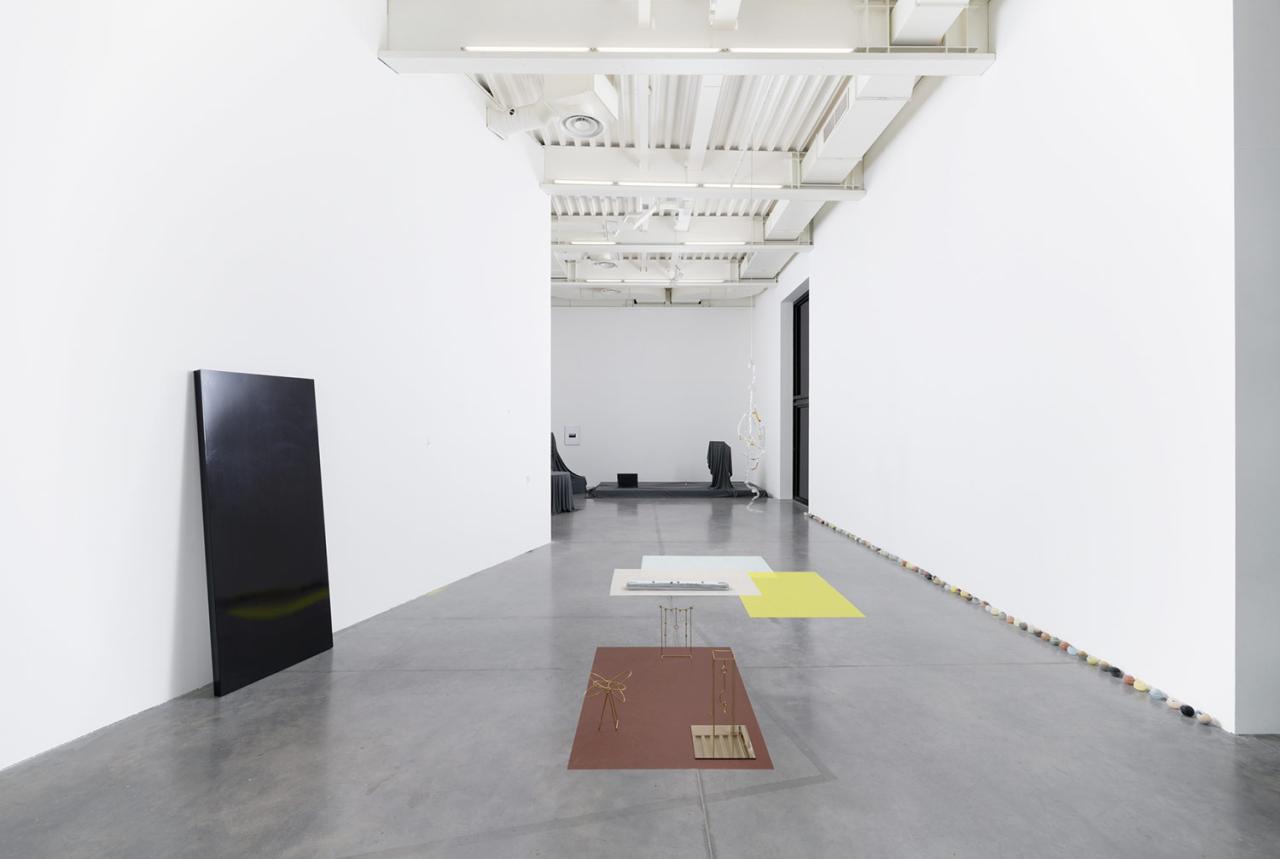
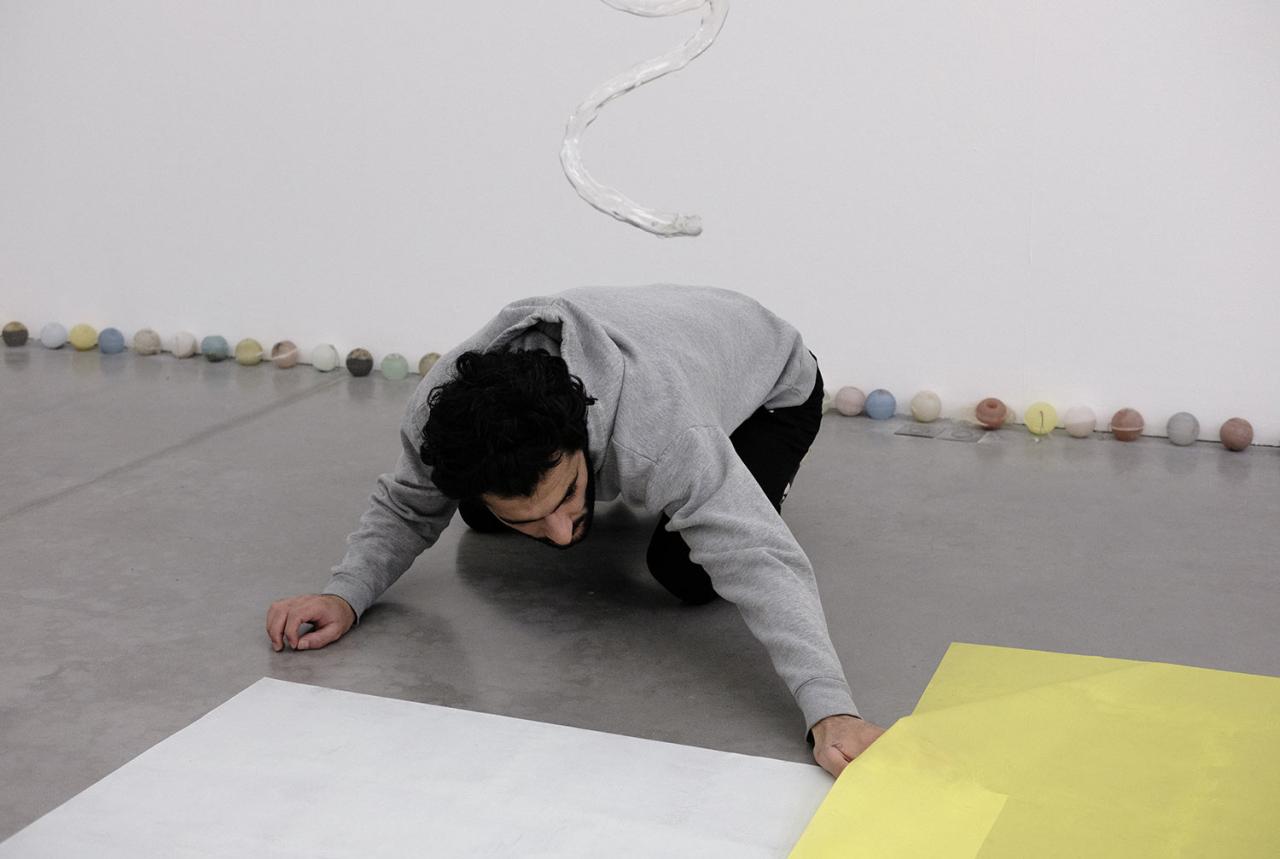
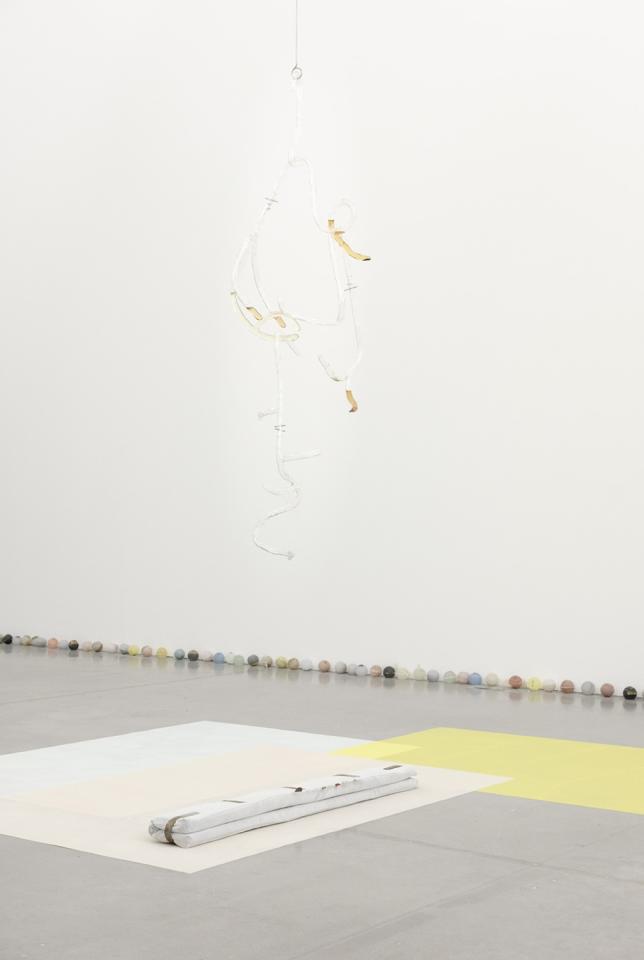
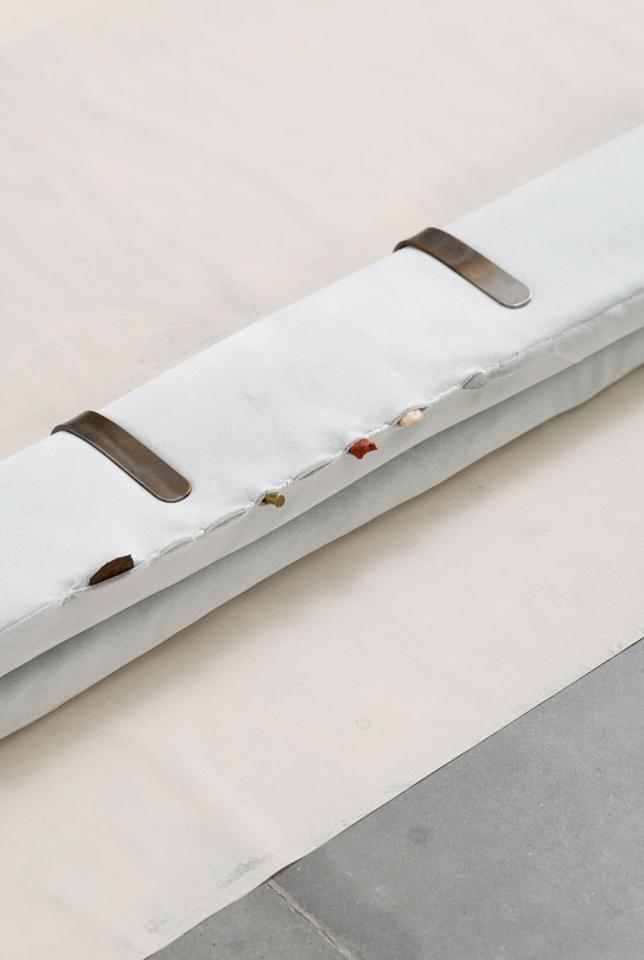
Vues d’installation :
the little lost planets, 2022, paraffin, organic and found elements (flowers, hair, cigarette butt, chain, beads...), dia 6 cm ;
a paintingyellow, 2022, cling film, paint, 150 cm x 100 cm ;
a landscapegreen, 2022, cling film, paint, 150 cm x 100 cm ;
a slippery poembrown, 2022, cling film, paint, 150 cm x 100 cm ;
a flying sculpturebeige, 2022, cling film, paint, 150 cm x 100 cm ;
l’âme lézardée, 2022, foam, velvet, cotton thread, stainless steel, stones, used ball, capsule, 100 cm x 16 cm x 6 cm ;
et mon corps est un asile ouvert toute la nuit, 2022, glass, stainless steel, water, tea, coffee, wine, variable size ;
sensitive surface: thermotactile, 2022, steel, black heat-sensitive paint, 200 cm x 80 cm
a landscape_green, 2022, cling film, paint, 150 cm x 100 cm, view of the performance
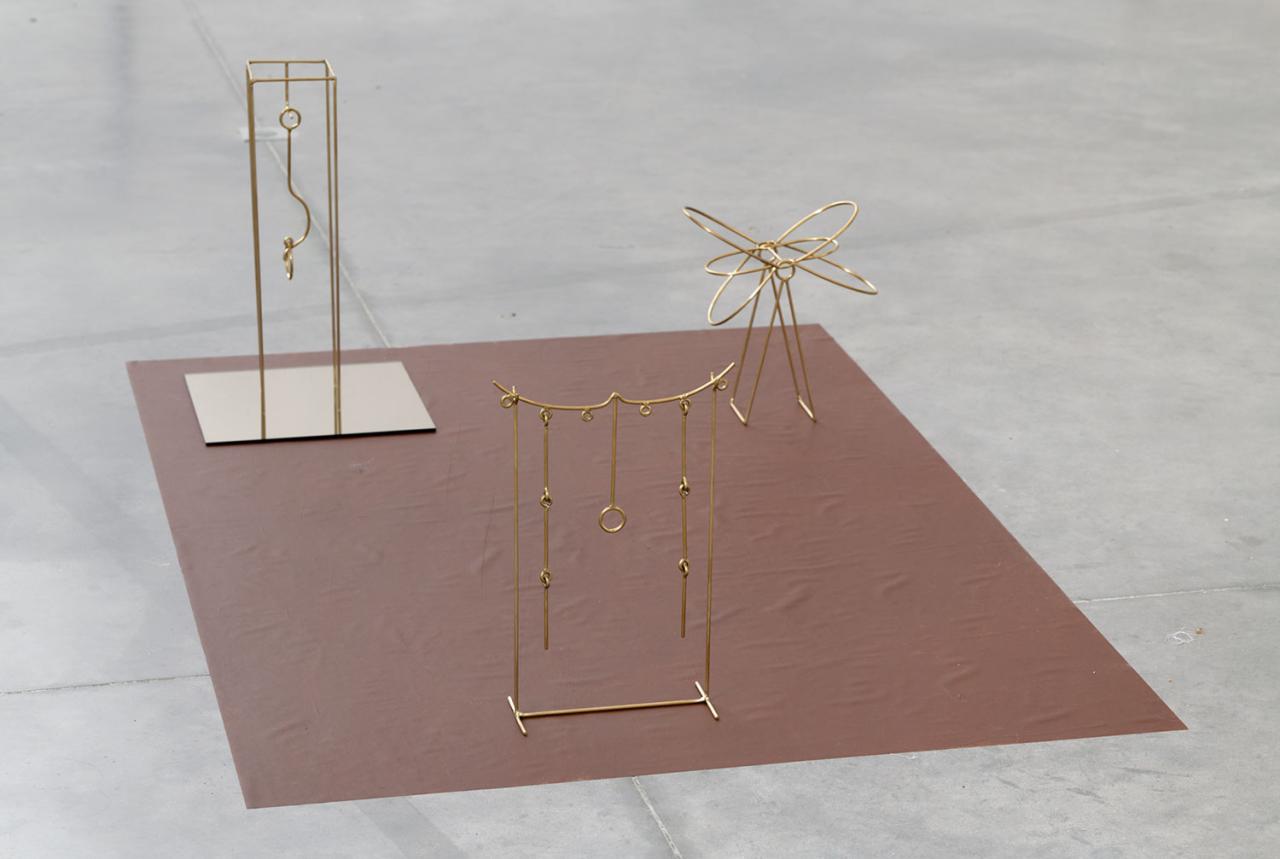
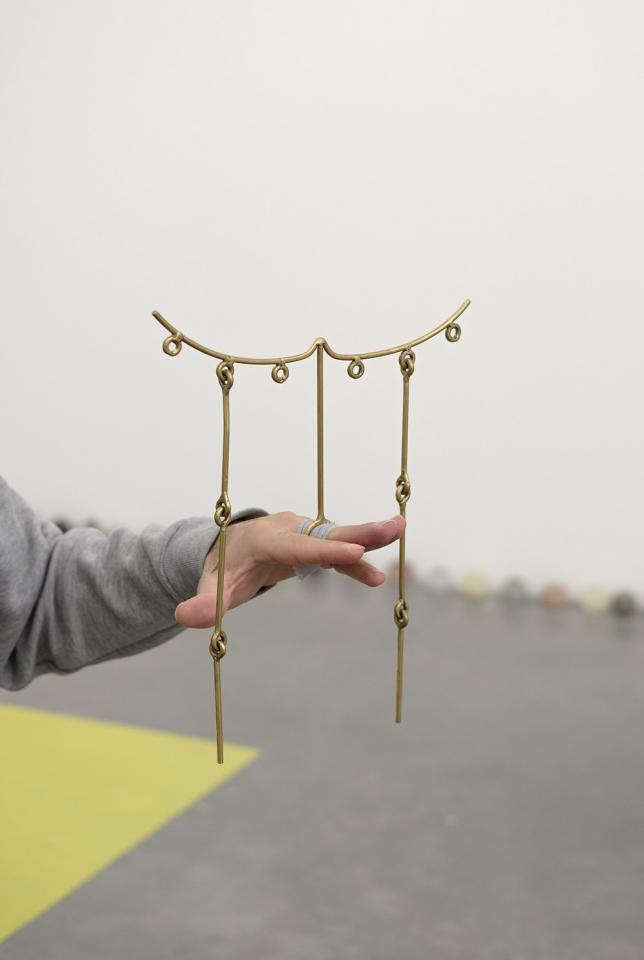
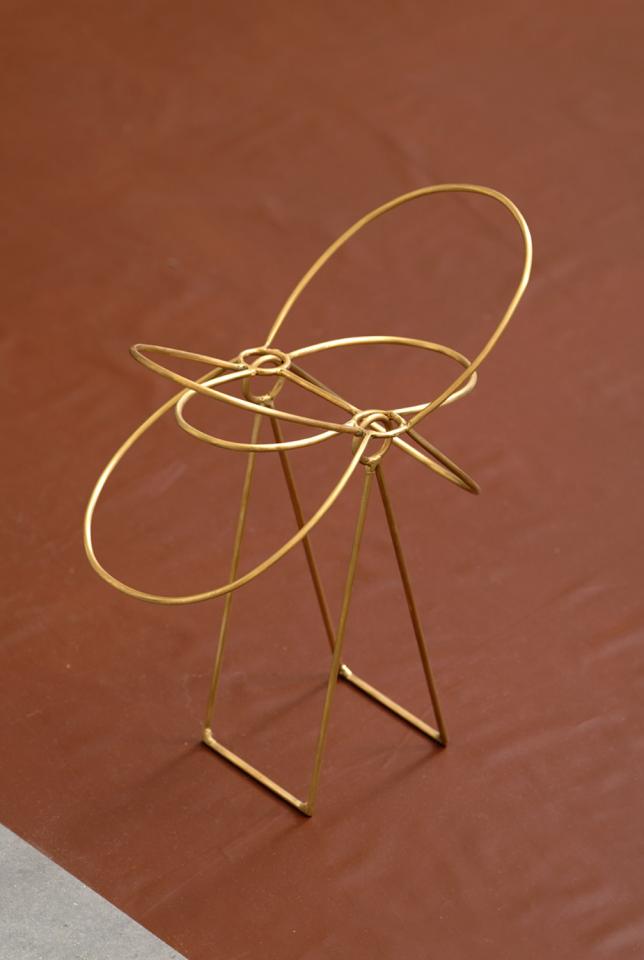
des astres, des outils, de la musique le jour comme la nuit, 2022, brass, mirror, variable size ;
a slippery poem_brown, 2022, cling film, paint, 150 cm x 100 cm. Installation view.
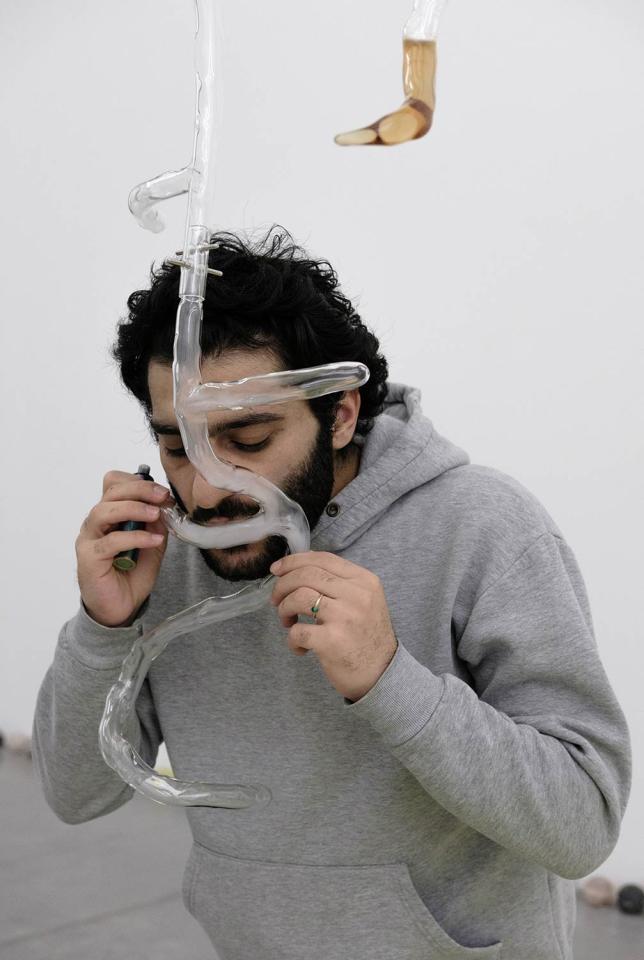

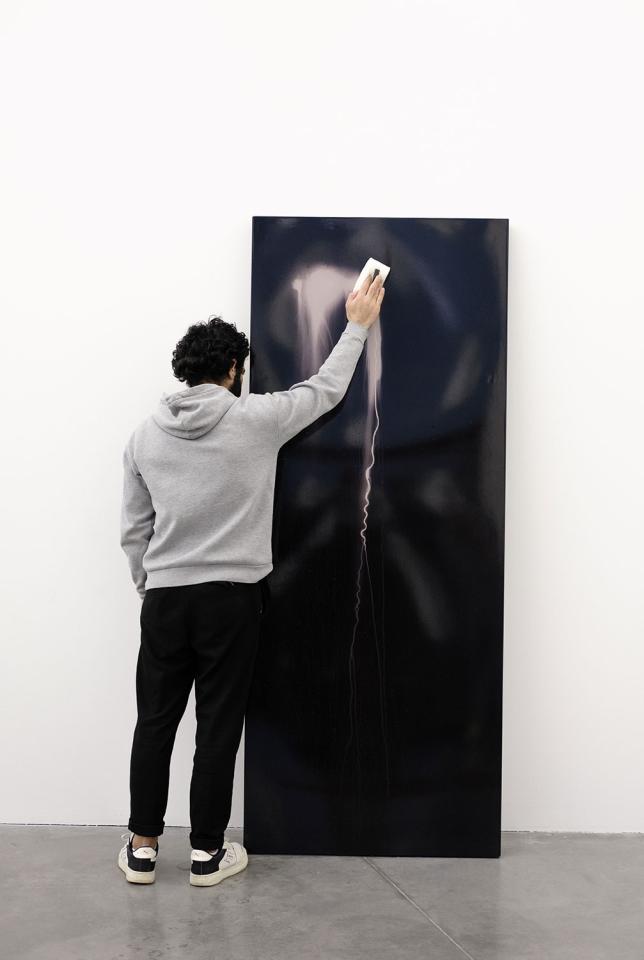
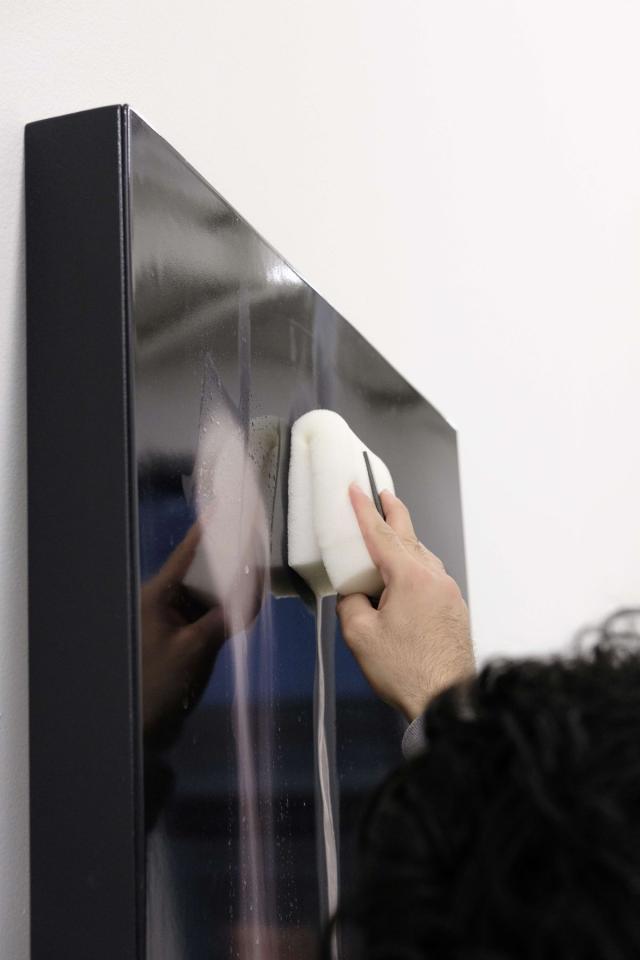
et mon corps est un asile ouvert toute la nuit, 2022, glass, stainless steel, water, tea, coffee, wine, variable size
sensitive surface: thermotactile, 2022, steel, black heat-sensitive paint, 200 cm x 80 cm. View of the performance.
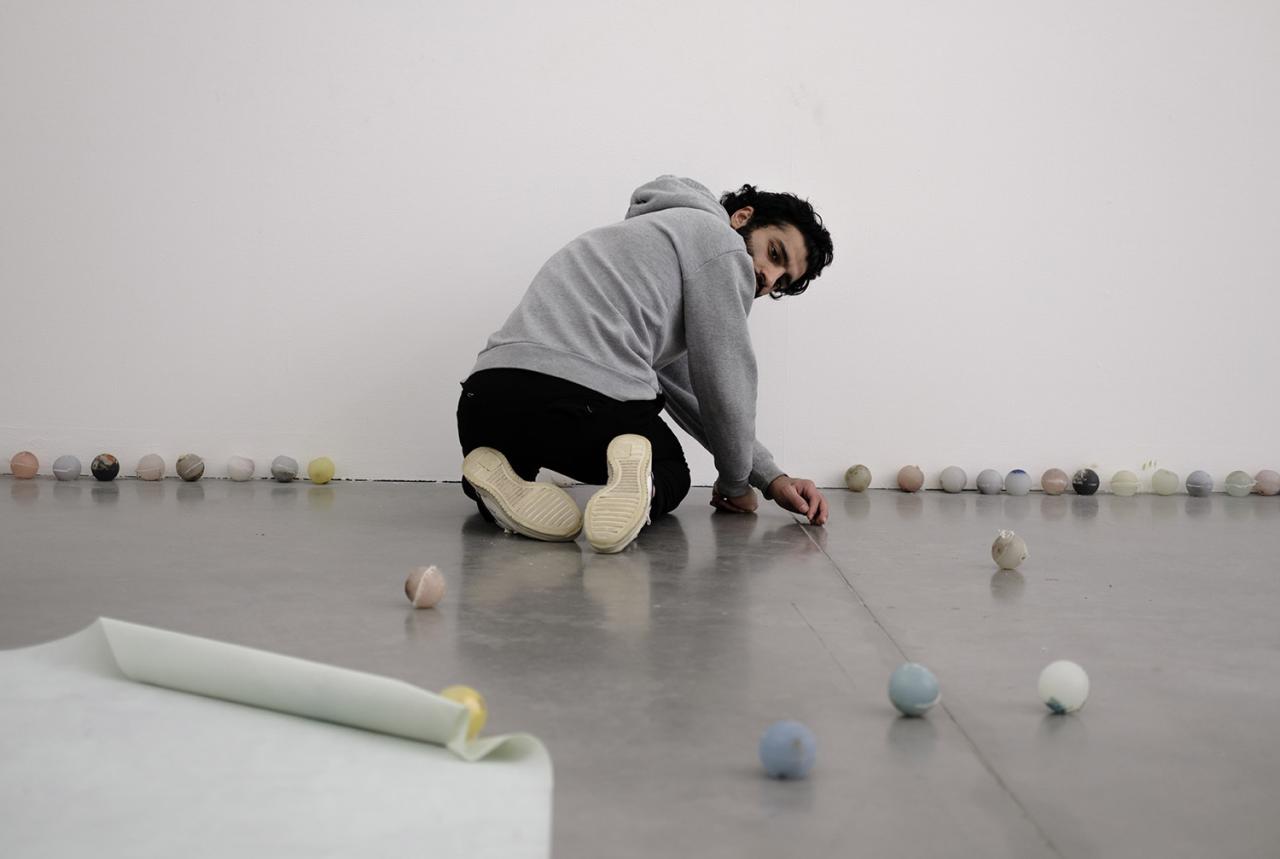
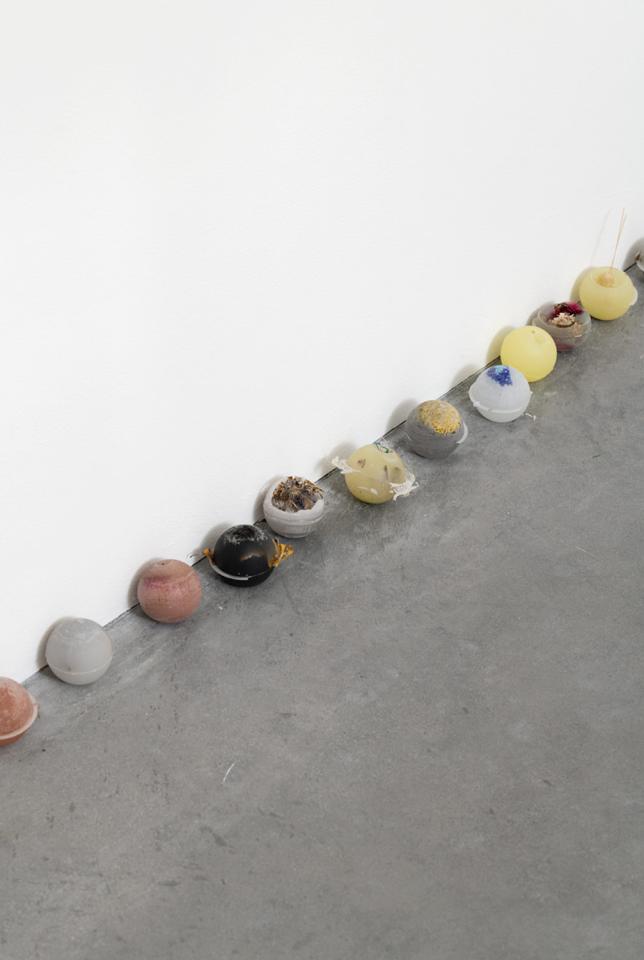
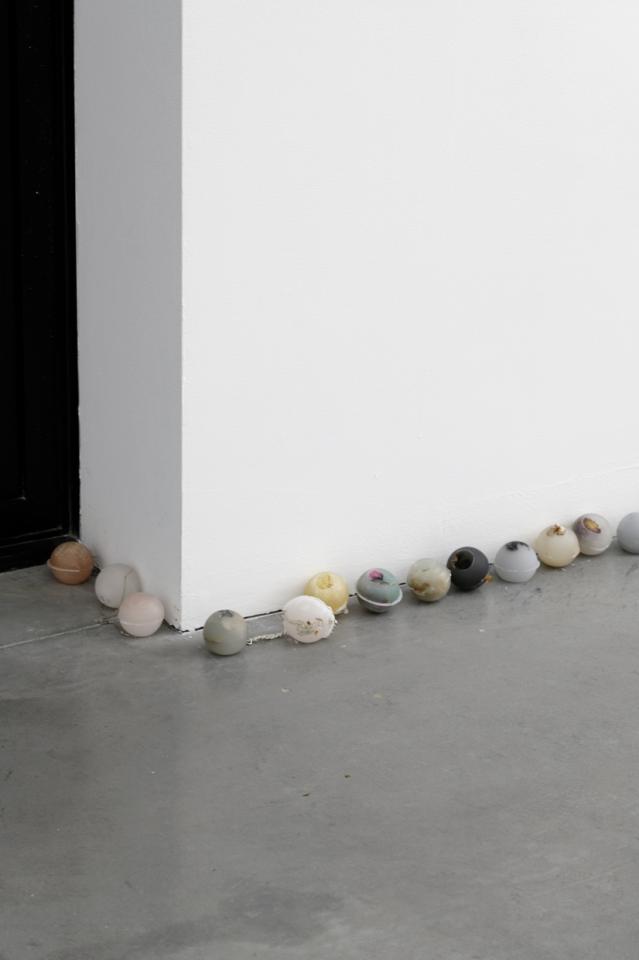
the little lost planets, 2022, performance view and detail : the little lost planets, 2022, paraffin, organic and found elements (flowers, hair, cigarette butt, chain, beads...), dia 6 cm
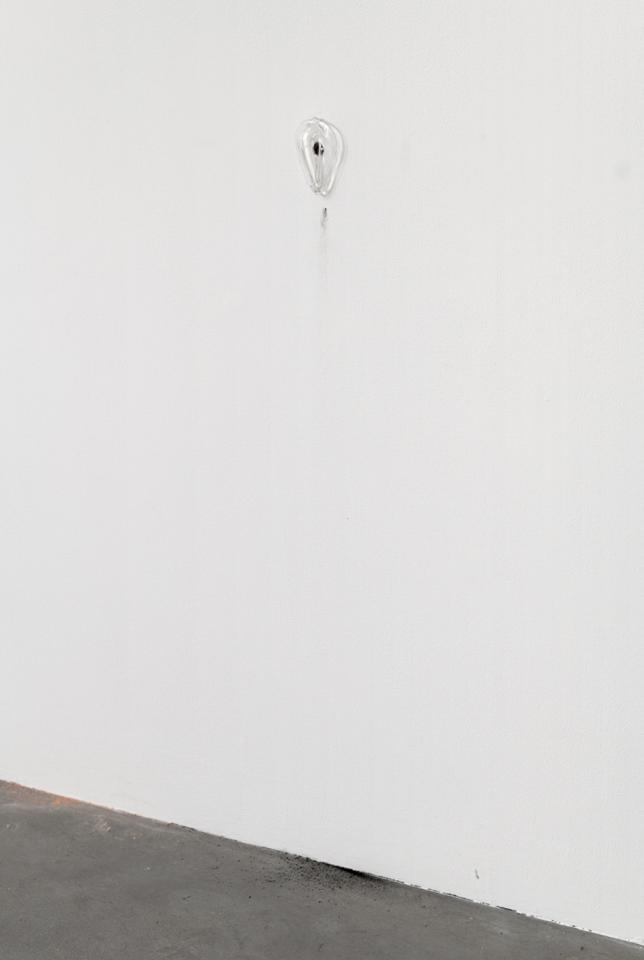
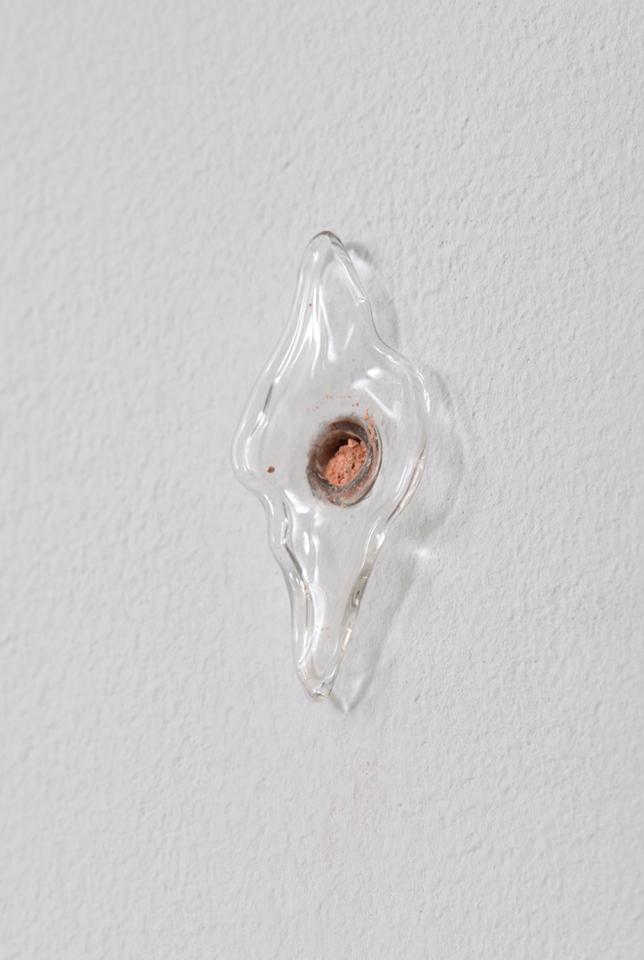
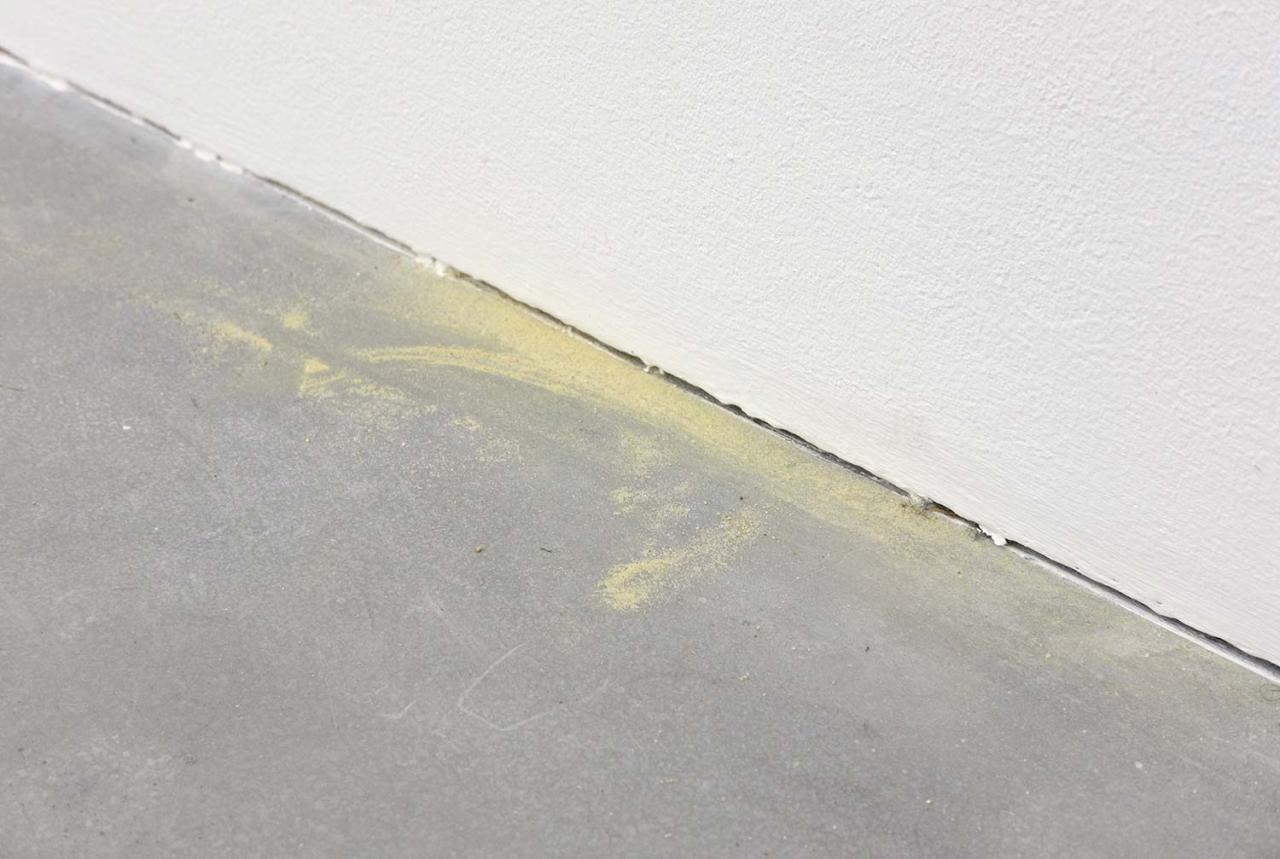
jusqu'à leur disparition, 2022, glass, pigments, volcanic stone, sand, make-up powder, approx. 7 cm
Installation view and detail
The exhibition, which brings together the four artists nominated for the Frac Bretagne Prize, doesn’t follow a thematic approach but instead aims to highlight postures, temperaments, and perspectives on the world that call for particular modes of attention. Like lizards that suddenly emerge only to disappear just as quickly, the artists gathered here are drawn to transitional states, to moments of shifting from one perspective to another, to the body in its impermanence and fragility. Some of the works have a fleeting life as they develop in relation to the exhibition space, only to disappear or persist in another form in a new location.
From lizards, we have inherited expressions like “lounging around” and “lazing about,” which evoke states of stasis and lack of movement, often connoted negatively as moments of unproductiveness. But the stillness of the lizard is never reducible to immobility or simple rest, for even motionless under the sun, the lizard is always alert. For the philosopher Jérôme Lèbre, author of In Praise of Stillness, stillness corresponds to the decision to occupy a space and hold a position. In an age of acceleration, with imperatives of mobility and flexibility, being an artist means, above all, choosing to stop, to stand in a place—not as a retreat from the world, but rather as a way to open up the realm of possibilities. Through diverse plastic and conceptual approaches, Reda Boussella, Clémence Estève, Fanny Gicquel, and Valérian Goalec call on inaction, slowness, dreams, horizontality, as well as the notion of falling and failure, for their potential as resistance to the present-day thirst for verticality, success, and achievement.
For instance, in Valérian Goalec’s installation, the standardized architecture of award venues is subtly repurposed to poetically question the relevance of competitiveness in the art field. In Reda Boussella’s sculptures, training objects from combat sports can transform into burlesque elements, and the frightening bite of a Malinois dog becomes a tender waltz. Clémence Estève distorts the silhouettes of monumental sculptures from art history; for her, scoliosis is a way to question the social injunctions for bodily correction and a means of deviating while remaining fixed, capturing movement where the body seems immobile. Through slowness and deceleration, Fanny Gicquel’s performances invite contemplation, creating images close to living tableaux that question our current modes of relationship and communication.
The artists suggest that the vulnerability of bodies and our environment offers a gateway to the possibility of developing new forms of sharing, presence, and care. They also suggest inventing new strategies of interaction and fresh perspectives on our bodies and their metamorphoses on physical, intimate, and social levels.
Elena Cardin
Text written for the group show Les lézards, Frac Bretagne, 2022.







Studio views










Group show views An Imagination of Bodily Autonomy
Photo : Nina Kraus






Research documents
Related articles :
https://www.zerodeux.fr/reviews/les-lezards/